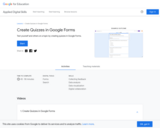
Learn how to distinguish facts from opinions by using a list of guiding questions.
- Subject:
- Arts
- English Language Arts
- Material Type:
- Reading
- Provider:
- Annenberg Learner
- Date Added:
- 05/05/2022

Learn how to distinguish facts from opinions by using a list of guiding questions.

As part of the BBC's Skillswise unit, this resource covers the basics of separating fact from opinion through a worksheet, a factsheet, and a quiz.

Learn about bees, their habitat and how to interact with a swarm in this Wild TV video segment.

Biology 2e is designed to cover the scope and sequence requirements of a typical two-semester biology course for science majors. The text provides comprehensive coverage of foundational research and core biology concepts through an evolutionary lens. Biology includes rich features that engage students in scientific inquiry, highlight careers in the biological sciences, and offer everyday applications. The book also includes various types of practice and homework questions that help students understand—and apply—key concepts. The 2nd edition has been revised to incorporate clearer, more current, and more dynamic explanations, while maintaining the same organization as the first edition. Art and illustrations have been substantially improved, and the textbook features additional assessments and related resources.


By the end of this section, you will be able to do the following:
List the steps in eukaryotic transcription
Discuss the role of RNA polymerases in transcription
Compare and contrast the three RNA polymerases
Explain the significance of transcription factors

Test yourself and others on a topic by creating quizzes in Google Forms. Time to complete: 45-90 minutes

The Dinosaur Museum is located in Blanding, Utah. Use this site to learn all about the exhibits and dinosaur information.

This site has a colorful display of information about Oregon. It contains a map, pictures, a list of state symbols, and links to related information.

Strategies to help students recognize the difference between fact and opinion provided by a standardized test preparation site intended for fourth grade. Includes teaching ideas such as analyzing facts and opinions in newspapers, and opinion/ proof notes.

How can you determine if online information is fact or fiction? Use this online article to become more computer literate in this topic. Includes a video.

A PBS website where you can learn all about what's swimming around below the waters of Florida.

Psychology is designed to meet scope and sequence requirements for the single-semester introduction to psychology course. The book offers a comprehensive treatment of core concepts, grounded in both classic studies and current and emerging research. The text also includes coverage of the DSM-5 in examinations of psychological disorders. Psychology incorporates discussions that reflect the diversity within the discipline, as well as the diversity of cultures and communities across the globe.Senior Contributing AuthorsRose M. Spielman, Formerly of Quinnipiac UniversityContributing AuthorsKathryn Dumper, Bainbridge State CollegeWilliam Jenkins, Mercer UniversityArlene Lacombe, Saint Joseph's UniversityMarilyn Lovett, Livingstone CollegeMarion Perlmutter, University of Michigan



By the end of this section, you will be able to:
Explain how scientific research addresses questions about behavior
Discuss how scientific research guides public policy
Appreciate how scientific research can be important in making personal decisions

Explore the sweet, slimy world of snails (and worms!) as you discover the difference between fact and fiction with videos, stories and games.

Great introduction to the use of "saber" and "conocer", "pedir" and "preguntar". The lesson is easy to understand, with ample examples. A short quiz, oral exercise and test at the end of the lesson checks the student's mastery of this grammar principle. Teachers can set up free accounts to monitor student progress on quizzes and tests. Printer-friendly pages make great grammar summaries for student notebooks.